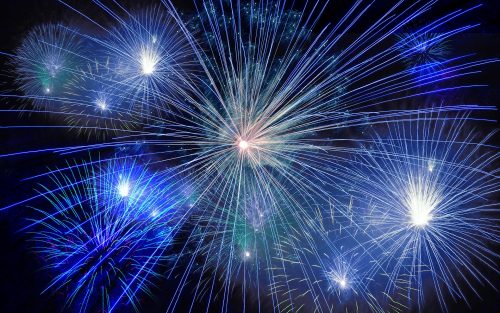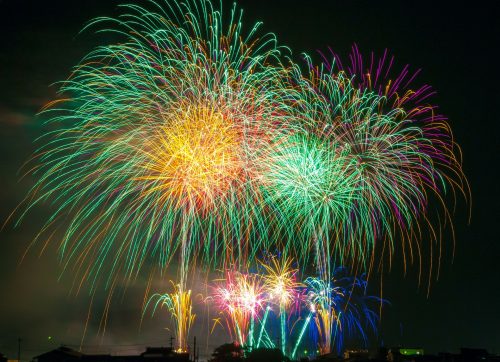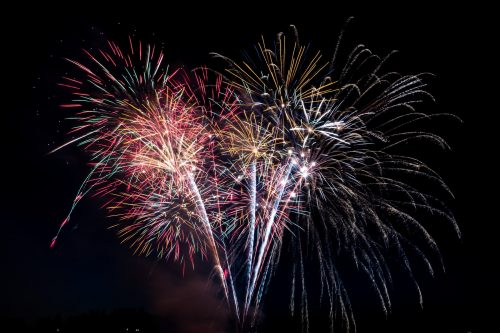A Quick Tip – How To Capture Fireworks
Can art be produced automatically?
You know what we’re talking about (whether any of us want to admit it or not) and that is your camera’s automatic capabilities.

The debate over whether or not your camera’s automatic capabilities can produce output like a skilled photographer will probably remain up in the air for some time. Technology is improving rapidly, sure, but there’s something to be said for a steady hand.
The debate around automatic aside, cameras are expensive and these capabilities are more sophisticated now than ever before. Why not use automatic, then?
In most cases, automatic is perfectly fine. And, in most cases, you’re gonna get some pretty great shots using it. We wouldn’t lead you astray and you’ve probably already noticed this on your own. As we said, it’s no secret that today’s cameras are sophisticated and extremely capable.
That is unless you’re trying to capture something like fireworks. Then you might want to think about things on a deeper level.

What do we mean by that?
If you want to capture something like fireworks, you’re going to need to understand the three variables of the exposure triangle.
Mathematical nightmare language aside, it is actually quite easy to understand in practice.
We’ll review the three variables of the exposure triangle with you and let you know how you can get more actionable information just like this below.
But first, here’s what you need to know about the exposure triangle’s three variables:
Aperture:
You probably don’t want the camera falling below f/9. Keep in mind that, even though fireworks often use a dark night as a backdrop, their explosions will add light that would not be there in a typical nightscape.
To capture the highest number of bursts with the best clarity possible, you’re going to need to crank up that aperture as high as you can go without sacrificing other exposure elements. You’ll want to keep things like the size of the fireworks display in mind as that could determine where you’ll have to set your aperture. As with many things, there’s no general rule of thumb or one-size-fits-all solution which means adaptability on the ground is key.
To recap:
- Don’t let the camera fall below f/9 when shooting fireworks
- Go as high as possible on your aperture to capture as many fireworks bursts as possible
- Don’t forget about the scope of the fireworks display
- Stay nimble on the ground and adapt as the situation demands
Shutter speed:
One step in this process that is vulnerable to photographer error is shutter speed. More often than not, you’ll want to use your camera’s bulb mode or a shutter speed that goes beyond the 30-second mark. In order to achieve this, you need to find out what the settings are for an on-the-the-fly extended exposure.
Bulb mode also means that the photographer has to keep precision in mind when evaluating his general surroundings. This is because the camera’s shutter won’t automatically close after a set period of time as it normally would.
To recap:
- Use your camera's bulb mode or a shutter speed past the 30-second mark
- Figure out what the settings are for an on-the-fly-exposure
- Precision is important because your shutter won’t automatically close per usual
ISO:
You need to go as low as you can – and that is in most scenarios you will encounter. You’ll want to set your ISO to the lowest setting allowed on your camera when shooting fireworks in particular. Use aperture and shutter speed as the main ways to expose your image for a better result that is almost noise-free.
To recap:
- Go as low as you can on ISO settings
- Rely upon aperture and shutter speed for better quality output
Phew, that’s a lot of jargon but give yourself a pat on the back – you made it! And now you know how to take awesome shots of fireworks.

The best thing about knowledge is that, as you become comfortable in your craft, you will be able to add your own flair and style to some general rules.
At the end of the day, that’s what it is all about: Making a photograph your own.
A key element in balancing settings for things like a fireworks display is a photographer’s ability to adapt to the situation at hand.
We want to prepare you to be the most nimble, agile photographer around. Luckily for you, we’ve got something we think will help you.
If you want more tips and tricks just like the above – from shooting fireworks to other dynamic lighting scenarios – you need to download a copy of the How to Photograph Fireworks Guide – TODAY!